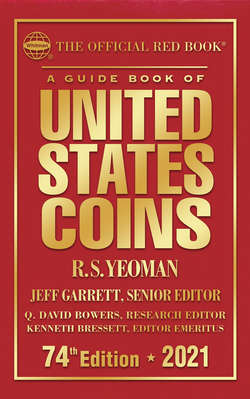Читать книгу A Guide Book of United States Coins 2021 - R.S. Yeoman - Страница 45
На сайте Литреса книга снята с продажи.
Coinage of William Wood Rosa Americana Coins
ОглавлениеWilliam Wood, an Englishman, obtained a patent from King George I to make coins for Ireland and the American colonies.
The first pieces struck were undated; others bear the dates 1722, 1723, 1724, and 1733. The Rosa Americana pieces were issued in three denominations—half penny, penny, and twopence—and were intended for America. This type had a fully bloomed rose on the reverse with the words ROSA AMERICANA UTILE DULCI (“American Rose—Useful and Sweet”).
The obverse, common to both Rosa Americana and Hibernia pieces, shows the head of George I and the legend GEORGIUS D:G MAG: BRI: FRA: ET. HIB: REX (“George, by the Grace of God, King of Great Britain, France, and Ireland”) or abbreviations thereof. Rosa Americana coins, however, were rejected by the American colonists. The coins are made of a brass composition of copper and zinc (sometimes mistakenly referred to as Bath metal). Planchet quality is often rough and porous.
| 1724 Twopence (pattern)$25,300, Choice AU, Stack’s Bowers auction, May 2005 |
The 1733 twopence is a pattern piece and bears the bust of George II facing to the left. It was issued by the successors to the coinage patent, as William Wood had died in 1730.
| 1733 Twopence (pattern), Proof$63,250, Gem PF, Stack’s Bowers auction, May 2005 |
